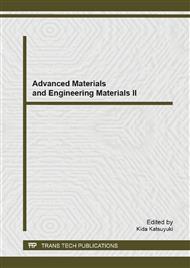p.639
p.643
p.647
p.653
p.657
p.661
p.668
p.672
p.676
The Design of the Mechanical Heart Valve by Using the Parametric Method
Abstract:
In order to reveal the design regularity for the various sizes of mechanical heart valve(MHV), the theoretical and parametric finite element method (FEM) were adopted to investigate the influence of the MHV pivot distance on the valve performance in this paper. Result shows that the characteristics of central flow can be improved for all sizes of valve with the increasing of the pivot distance, and the acceptable hydrodynamic performance of the MHV designed in this method was also shown in the valve pulsatile flow test, which proved that the parametric method is a useful tool for MHV design.
Info:
Periodical:
Pages:
657-660
Citation:
Online since:
April 2013
Authors:
Keywords:
Price:
Сopyright:
© 2013 Trans Tech Publications Ltd. All Rights Reserved
Share:
Citation:


